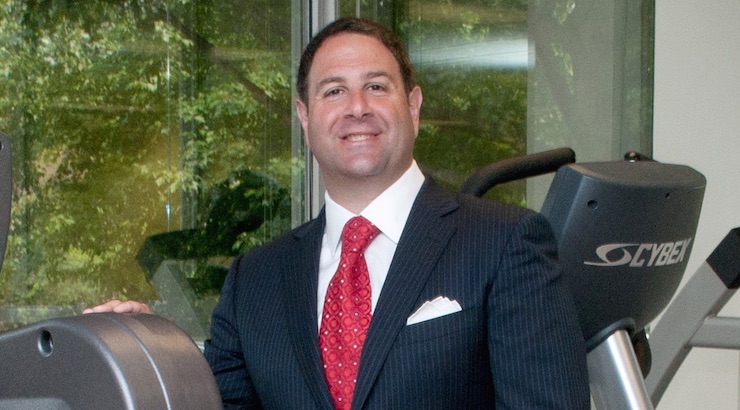John Gallucci, Jr On Soccer Players Understanding Puberty & Growth Spurts
SoccerToday columnist and MLS Medical Coordinator John Gallucci, Jr. on the impact of growth spurts and how to best handle them as an athlete.
A dynamic expert in injury prevention, rehabilitation, sports medicine and athletic conditioning, Gallucci is the Medical Coordinator for Major League Soccer (MLS), overseeing the medical care of 600 professional soccer players. Gallucci is the former Head Trainer of the New York Red Bulls MLS team and is a Sports Medicine consultant for professional athletes in the NHL, NFL, NBA, MLB, and USA Wrestling. Gallucci, Jr. is also President, JAG Physical Therapy & JAG Pediatric Therapy.
Diane Scavuzzo: Generally, what age do growth spurts strike?
John Gallucci, Jr: Generally, we see a growth pattern when athletes start to get into the pubescent years, between 10-16 years old.
Diane Scavuzzo: How long do growth spurts usually last?
John Gallucci, Jr: Again, it’s not a time component, but more of a component of age. What you see are most females getting most of their growth spurts between the ages of 12 and 15, and most males getting most of their growth spurts between the ages of 10 and 16.
 Diane Scavuzzo: Do growth spurts increase injury risk?
Diane Scavuzzo: Do growth spurts increase injury risk?
John Gallucci, Jr: Basically, as we have seen over the years, a growth spurt in the human body, male or female, usually can cause the tendons to be overstretched, and we know that the two most popular diagnoses are Sever’s Disease and Osgood Schlatter’s Disease.
In Osgood Schlatter’s Disease, the bones around the knee grow quicker than the tendons, causing these tendons pull on the bones causing inflammation and swelling of the attachment of the bone, which can be painful and sore.
In Sever’s Disease, it’s the same concept with the ankle, where the bones around the ankle grow quicker than your Achilles tendon, and this tendon will grab or irritate the bone attachment causing swelling and pain.
Diane Scavuzzo: Why do growth spurts increase chances for fractures? Muscle strain?
John Gallucci, Jr: The muscle strain component is really from the tendons and muscles being pulled because the bone grew quicker, which causes a decrease in elasticity, which leaves the possibility of that muscle tearing or straining.
When you look at a fracture, our body has what we call “growth plates” within the bone.
Those growth plates are what gives room for the growth spurt. As you grow, those growth plates become calcified and the bone hardens leaving no more opportunity to grow. Usually, that type of growth plate during those adolescent years is more easily fractured than a normal bone.
It is understandable why pediatric orthopedists become very concerned about any type of growth plate fracture because a growth plate fracture can truly stop the growth of the bone, and ultimately you can end up with one limb shorter than the other because the growth plate injury was not properly taken care of by the appropriate medical professional.
Diane Scavuzzo: How specifically do growth spurts make a player more vulnerable to injury on the field? How does kicking the soccer potentially hurt the groin muscle?
John Gallucci, Jr: Well these are really two different questions that really have nothing to do with each other. Again, a growth spurt, as I said, will make the muscle and the tendons tighter causing inflammation and swelling. As far as kicking the soccer ball and the groin muscles – It is a repetitive action where we need to train the entire body in all different functional planes. You can’t just do one specific motion over and over again because it will cause an overuse injury.
When you are looking at soccer, there’s a tremendous amount of adduction and hip flexion that goes on repetitively just by running and kicking the ball.
We need to make sure that we are also getting the lateral or outside part of the hip and the back of the hip; your glutes, strong as well. It is also recommended that when we are dealing with any type of athlete, not just soccer players, that no matter what the repetitive action is, that we train the entire joint motion appropriately with strengthening which will assist in decreasing injuries more so.
Diane Scavuzzo: Are girls more vulnerable than boys?
John Gallucci, Jr: As we know, the prevalence of knee injuries in female adolescent athletes that go into their teen years is higher than their male counterparts. There are a bunch of rationales behind that – One is biomechanics and deviations where in the pubescent years the pelvis widens which causes the angle of your femur/thigh bone going into the knee to be at a different angle as opposed to being straight. This can cause different strains of the muscles and ligaments around the knee, which can increase the incidence of injury.
Diane Scavuzzo: What helps?
John Gallucci, Jr: There are a tremendous amount of programs out there and evidence/research based programs on teaching female athletes the appropriate strengthening, stretching, and landing/jumping techniques.
At JAG Physical Therapy, where I work and own, basically what we have is a program called the Lower Extremity Strengthening System, that helps decrease the incidence of all lower extremity injuries. It has a biomechanical component that teaches all female athletes how to land appropriately and how to run appropriately to help decrease the incidence of female knee injuries.
Diane Scavuzzo: What should parents and coaches know? When should a player go to physical therapy for help?
John Gallucci, Jr: Parents and coaches should understand that overuse, repetitiveness, “too much, too soon,” and not an appropriate warm up, can all lead to sustaining a musculoskeletal injury to an athlete.
An athlete should go to a medical professional or physical therapist for help when there is an onset of pain.
Usually we tell our athletes about early season training and the normal pains that they are going to get – We call that delayed onset muscle soreness.
Whenever you exercise there’s an opportunity for increased blood flow that can cause soreness of the muscle. On a scale of 0 – 10, with 0 being no pain, and 10 being the most pain, if that pain ever goes above a 3 it is important that the athlete goes to a certified athletic trainer or physical therapist to make sure that you have not sustained an injury. They will evaluate and if they conclude that it is a bad muscle injury they will get a medical doctor involved.
Diane Scavuzzo: Is there anything a player can eat that makes a difference? Impact of nutrition?
John Gallucci, Jr: We want to teach all of our children, not just athletes; the appropriate foods to eat to keep your metabolism and body healthy. The healthier we are and the less sugar we put into our bodies will help our bodies function better. The biggest things I can recommend is to really understand the sugar content of all soft drinks and sports drinks. Our body needs water, the more water we drink, the healthier our body can be. If we are drinking all of these sugary drinks, we need to understand that we may face problems such as obesity, type 2 diabetes, and different cases like this.
When we look at children under the age of 12 and if they are going down these negative realms, it is 100% the adults’ faults.
We need to start to take control about obesity in our society.
Our children need to be active and we need to implement programs to keep our kids active. I live in a community, where unfortunately the students live a ½ mile from school, but are forced to be driven to school. We need to keep our children active, and teach them how to eat, drink, and exercise properly.
RELATED ARTICLE: GALLUCCI JR. ON THE WORST MISTAKES PLAYERS MAKE






